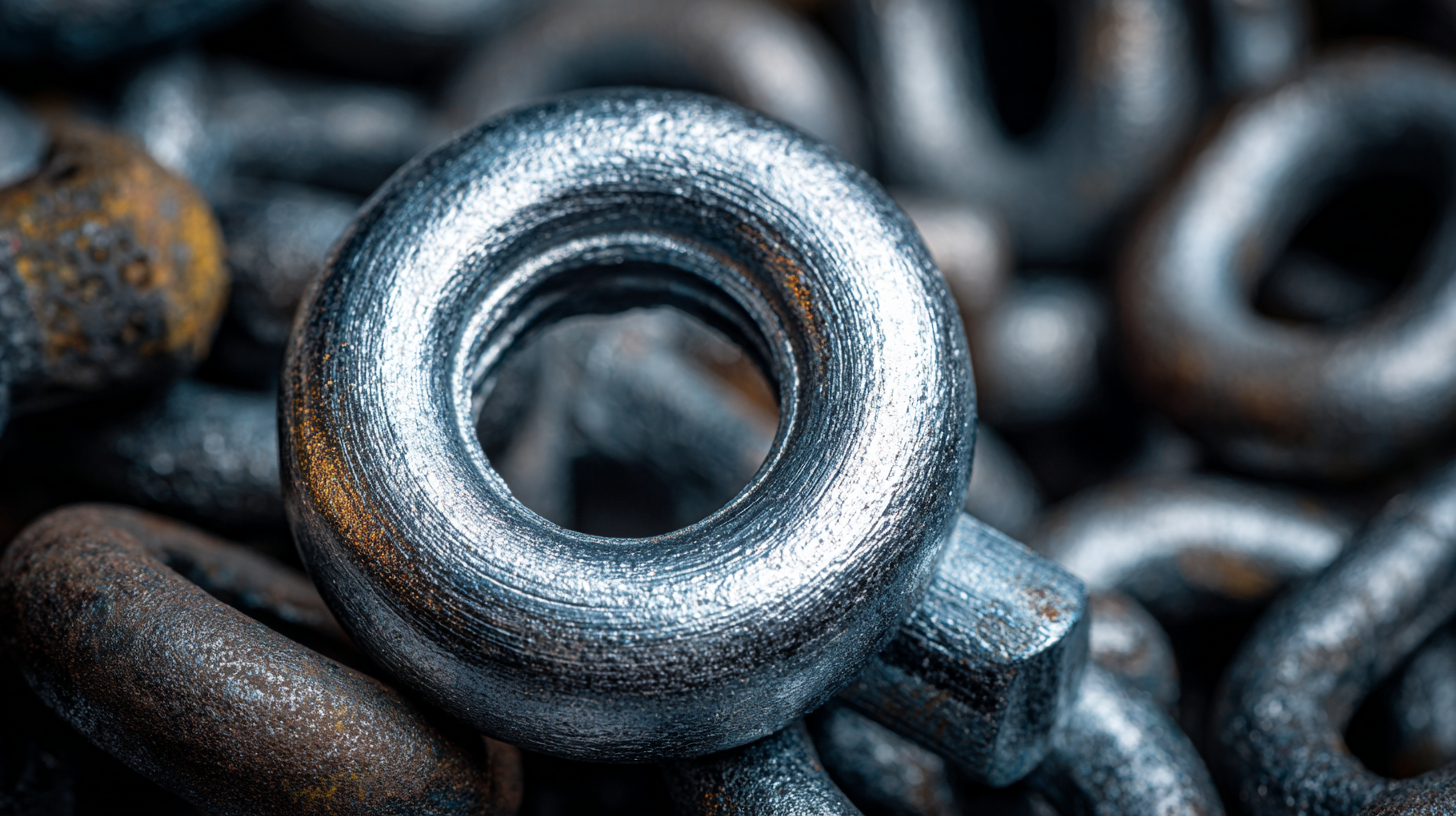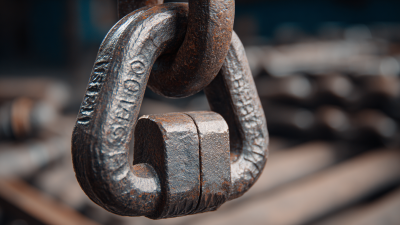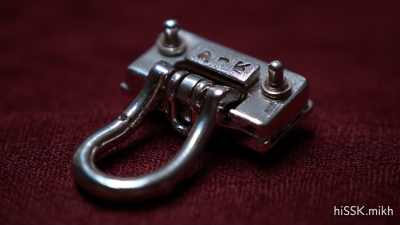In today's global market, the demand for reliable and high-quality lifting equipment is on the rise, with reports indicating that the global lifting equipment market is projected to reach USD 50 billion by 2027, growing at a CAGR of 6.4% from 2020. Among these essential components, the Lifting Eye Bolt plays a crucial role in ensuring safe and efficient load handling. These specialized bolts are designed to attach lifting devices, ensuring secure connections in various industrial applications, from construction to manufacturing. However, sourcing the perfect Lifting Eye Bolt is not as straightforward as it seems; it involves understanding specifications, material grades, and compliance with relevant safety standards. By implementing effective sourcing strategies, companies can significantly enhance their operational safety and efficiency while meeting growing industry demands.

When it comes to lifting operations, understanding the different types of lifting eye bolts available in the market is essential for ensuring safety and efficiency. Lifting eye bolts are categorized based on their design, load capacity, and application. According to a report by Grand View Research, the global market for lifting and rigging equipment, which includes eye bolts, is expected to reach $36 billion by 2025, with a growing emphasis on safety standards and material certification.

One key distinction among lifting eye bolts is between forged and cast types. Forged eye bolts are known for their superior strength and durability, making them ideal for heavy-duty applications. In contrast, cast eye bolts are generally more suitable for lighter loads but may have limitations in terms of tensile strength. The choice between these two types can significantly impact the overall safety of the lifting operation. Moreover, as per industry guidelines from the American National Standards Institute (ANSI), it is vital to select eye bolts that meet specific load ratings to prevent accidents, underscoring the importance of understanding the various options available.
When sourcing lifting eye bolts, selecting the right materials is crucial for ensuring strength and durability. According to a recent report by the Industrial Fasteners Institute, approximately 10% of lifting-related accidents arise from equipment failure, often linked to improper material choice. Opting for high-quality materials such as alloy steel or stainless steel can significantly mitigate these risks. Alloy steel eye bolts are known for their high tensile strength, making them ideal for heavy lifting applications, while stainless steel variants offer excellent corrosion resistance, essential for outdoor or marine environments.
When evaluating potential suppliers, focus on their certification practices. Ensuring that eye bolts meet international standards, such as ISO 9001, is vital. This underscores the importance of quality control measures that can influence product durability. It's a good tip to request material test reports, as these documents can provide insights into the structural integrity and load-bearing capacity, ensuring they align with your operational requirements.
Moreover, consider the specific load requirements and environmental factors pertinent to your operations. Lifting eye bolts designed with additional tensile enhancements can withstand unexpected loads better. According to the American Society of Mechanical Engineers (ASME), employing eye bolts specifically rated for dynamic loading can further reduce failure rates by as much as 30%, hence optimizing safety in your lifting operations.
When sourcing eye bolts globally, understanding essential certifications and standards is crucial to ensure safety and reliability. Different regions may have specific certifications such as the ASTM in the United States, the ISO standards internationally, and the EN standards in Europe. These certifications reflect rigorous testing and quality assurance processes, ensuring that the eye bolts meet the necessary strength and durability requirements for various lifting applications.
Additionally, identifying reputable manufacturers who adhere to these standards is vital. Look for eye bolts that come with clear documentation of their certifications, which can include load ratings, material specifications, and testing results. This information not only assures you of the product’s quality but also protects you and your operation from potential hazards that can arise from using substandard components. By prioritizing certified eye bolts, you can enhance safety measures in your lifting operations and minimize the risk of equipment failure.
In today's interconnected world, sourcing reliable suppliers for lifting eye bolts requires a strategic approach. Global sourcing strategies can help businesses mitigate risks inherent in supply chains, which are still vulnerable due to various disruptions. Organizations need to focus on identifying suppliers who not only meet product quality standards but also demonstrate resilience and flexibility in operations. Building relationships with suppliers across different regions can provide alternatives during unforeseen challenges and lead to more robust procurement processes.
Furthermore, understanding market dynamics and logistics management is crucial. As the recent insights suggest, the role of effective marketing and management practices cannot be overstated when navigating the complexities of global supply chains. By prioritizing collaborations with suppliers who align with their long-term goals, companies can enhance product availability and reduce lead times. Emphasizing transparency and communication with these global partners fosters trust and facilitates a smoother sourcing experience for lifting eye bolts.
| Tip | Description | Key Considerations | Benefits |
|---|---|---|---|
| 1. Understand Standards | Familiarize yourself with international standards for lifting eye bolts. | ISO, ASME standards | Ensures safety and compliance. |
| 2. Quality Assurance | Choose suppliers who provide certifications for product quality. | ISO 9001, Material certifications | Reduces risks of failure in application. |
| 3. Supplier Evaluation | Assess potential suppliers based on their reputation and experience. | Background checks, references | Find reliable and trustworthy partners. |
| 4. Cost vs. Quality | Balance between cost and quality when selecting suppliers. | Total landed cost analysis | Ensures value for money. |
| 5. Communication | Maintain clear and open communication with suppliers. | Regular updates, responsive inquiries | Builds strong partnerships and trust. |
When ordering lifting eye bolts internationally, one of the biggest mistakes to avoid is failing to thoroughly vet your supplier. It’s essential to research the manufacturer’s credentials, certifications, and reputation. Skipping this step can lead to sourcing low-quality products that may not meet safety standards, potentially resulting in catastrophic failures during operation. Always ask for product specifications and test reports to ensure compliance with international quality norms.

Another common pitfall is not being clear about your exact requirements. Being vague about dimensions, load capacities, and material specifications can lead to receiving the wrong product. Make sure to provide detailed drawings and clear descriptions to your supplier. Additionally, account for the varying standards and regulations across different countries. What is compliant in one region may not be acceptable in another, so understanding the regulatory landscape is crucial in mitigating risks and avoiding costly returns or delays.






